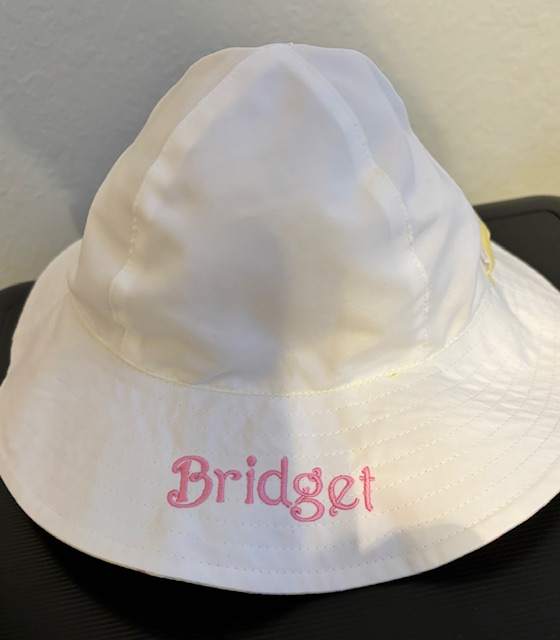The Art of Customized Embroidery: Unlocking the Secrets to Creating Distinct and Unforgettable Styles
Needlework, a craft steeped in practice and artistry, holds within its detailed stitches the power to transform textile right into a canvas of one-of-a-kind expression. The secrets to producing custom-made needlework designs that captivate the eye and leave a lasting perception hinge on a fragile equilibrium of strategy, creativity, and attention to detail. As we look into the globe of personalized needlework, we discover the nuanced interplay in between string option, sew complexity, and style personalization that boosts a mere garment to a work of art. Join us on a journey via the art of custom needlework as we unwind the mysteries behind crafting truly remarkable and distinct productions.
Picking the Right Needlework Threads
When choosing needlework strings, what vital aspects should you take into consideration to guarantee the very best results for your personalized layouts? The selection of needlework string is essential in establishing the last result of your embroidered layout. One of the primary considerations is the material of the string. Various materials such as cotton, polyester, rayon, and silk offer differing degrees of shine, resilience, and structure. It is important to select a thread product that complements the material you are embroidering on and lines up with the preferred appearance of the design.
Thicker threads can include measurement and appearance to your style, while finer strings are optimal for elaborate details and tiny message. Additionally, considering the shade fastness and washability of the string is important to make sure that your personalized designs keep their top quality and vibrancy over time.
Checking Out Different Stitch Methods
To explore the realm of 'Checking out Various Stitch Strategies', one have to realize the complexities and nuances that each stitching approach brings to the art of embroidery. Various stitch strategies not only add visual passion however also add to the general structure and dimension of the layout. One preferred stitch strategy is the satin stitch, which includes carefully packed parallel stitches to create a smooth and glossy surface area, suitable for filling in forms and producing vibrant outlines.
On the other hand, the backstitch is a flexible strategy frequently utilized for outlining and including fine information. It entails sewing backward to produce a strong line of embroidery. Additionally, the French knot stitch includes a responsive element to layouts, perfect for developing distinctive accents like flower facilities or decorative touches.
Exploring various stitch methods permits embroiderers to play with light, darkness, and depth within their designs, raising the visual appeal and creative high quality of their needlework jobs. By understanding different stitching techniques, one can open endless possibilities for producing one-of-a-kind and unforgettable custom needlework items.
Incorporating Personalized Style Aspects
Having explored the details of different stitch techniques such as the satin stitch, backstitch, and French knot, the focus currently changes towards incorporating customized layout elements in customized embroidery tasks. Individualized style components play a critical duty in making embroidery tasks truly special and memorable. One method to incorporate personalization is by including initials, names, or significant days to the style. This not only adds a personalized touch however additionally improves the sentimental worth of the embroidery piece.
Another means to incorporate tailored layout aspects is by consisting of signs or concepts that hold unique meaning to the recipient or show their rate of interests and personality. Integrating a preferred blossom, animal, or hobby-related sign can make the embroidery design more meaningful and customized. Additionally, picking shades that reverberate with the recipient or align with the desired motif can additionally boost the personalization of the embroidery task.
Understanding the Art of Color Control
One key element of color coordination is recognizing shade concept. This includes knowing how different colors communicate with each other, the feelings they share, and how they can be integrated to develop aesthetically enticing layouts. By applying color concept principles, embroiderers can create unified color combinations that boost the general appearance of the design.
Furthermore, focusing on comparison is important in color coordination. Making use of contrasting colors can help particular elements of the style pop, improve legibility, and create an aesthetically dynamic embroidery piece. By understanding the art of shade coordination, embroiderers can raise their designs and develop unforgettable pieces that resonate with customers and visitors alike.
Enhancing Texture With Advanced Embroidery Stitches

Bullion knots, on the other hand, can be utilized to create twisted, ropelike components that add a luxurious feeling to the embroidery. Experimenting with these sophisticated embroidery stitches permits you to press the boundaries of typical embroidery and create really distinct and aesthetically appealing textures in your layouts.
Conclusion
To conclude, why not try these out the art of custom-made embroidery entails a combination of picking the appropriate strings, discovering various stitch techniques, incorporating tailored layout components, mastering shade sychronisation, and boosting texture with innovative stitches. By recognizing and carrying out these crucial elements, embroiderers can create distinct and remarkable designs that showcase their creativity and skill. Needlework lovers can open the keys to creating beautiful and bespoke items that stand apart and leave a long lasting impression.